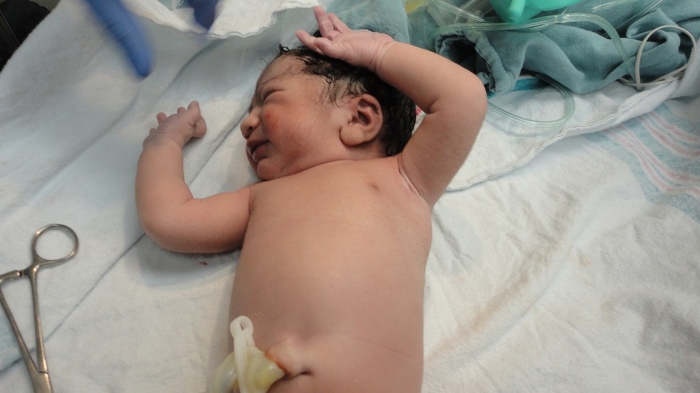Maze Cord Blood
Maze Cord Blood
Maze Cord Blood is a cord blood banking institution that offers the services of banking stem cells both from the cord blood and cord tissue. It is one of the companies ranked in our cord blood banking reviews, where we compare cord blood banks. The parameters for the comparison are also described in this article.
The very recent scientific advancements in the field of cell-based therapies have brought new ways to cure severe and debilitating diseases with only one stem cell transplantation. The scientific community has recognized the importance of research and development of cell-based therapies including the significance of banking various types of stem cells originating from multiple sources including cord blood and cord tissue and placenta. Prior to the discovery of stem cells within these tissues, umbilical cord and placenta were discarded at birth as a simple medical waste. The only source of stem cells was the bone marrow and the process of obtaining a proper donor was quite challenging. Also, the collection of stem cells from a compatible and transplantation into a patient was carrying significant health risks to both the donor and the patient. Once it was recognized that umbilical cord represents a source enriched with stem cells, the procedure of obtaining stem cells for cell-based treatments became more safe and simple.

History and Mission Of Maze Cord Blood
Maze Cord Blood was founded by Dr. Michael A. Werner in 2004. The huge motivation to engage into the business of collection, processing, storage and release of stem cells, Dr. Werner found in a life event that larked his carrier as a physician and founder of Maze Cord Blood. Dr. Werner’s brother died from a severe blood-related disease at a time when treatment options were limited. Nowadays, this disease could be cured with stem cell transplantation. Dr. Werner decided to devote his life to helping his and other families in providing affordable services of banking cord blood and cord tissue with a final goal to ensure the best possible treatment options for children and their families. Maze Cord Blood does not offer curretly a guarantee if the stem cells failed to engraft. Maze Cord Blood will also search for available compatible donors following the unsuccessful engraftment of transplanted stem cells. Currently the company is not accredited by AAAB.
The Collection, Processing, and Storage of Cord Blood At Maze
Once the parents decide to bank the cord blood and tissue, they simply need to register online in order to receive the collection kit. The recommended timeframe in which the parents are advised to submit an application is at least eight weeks prior to the planned delivery. Following online registration, the parents receive the collection kit that the physician will use in order to collect cord blood and tissue.
Collection Kit From Maze Cord Blood
Maze Cord Blood uses the FDA approved collection kit. Each collection kit contains detailed instructions for patient and physicians regarding the sampling of cord blood and cord tissue. Each bag has a CPD anti-coagulant that is recommended by the FDA. All components of a collection system are heparin-free. CPD represents more stable anti-coagulation properties compared to heparin that starts to resolve twelve hours following collection, which may lead to clot formation within the sample and directly reduce the number of retrieved stem cells. The collection bag is sterile both from inside and outside and can be used during the vaginal delivery or cesarean section. The bag accommodates the collection of 210mL of cord blood which is important for retrieving the maximum number of stem cells from each sample. The specifically designed shape of the collection bag also contributes to the maximum retrieval of stem cells from cord blood and tissue. All the process may take much less then ten minutes, except the cases where we are in front of nuchal cord complications.
Cord Blood Shipping
Maze Cord Blood employs highly effective courier services that guarantee the samples will be shipped to the processing laboratory within a time interval of 12-24 hours following collection. Once the courier service has been notified, samples should be collected within the hour of notification. The courier service will analyze the best possible routes for shipping the specimens to the laboratory and ensure that samples are delivered within the appropriate timeline. The courier also provides services for monitoring the temperature of samples during the transport. Each shipment may also be tracked using the appropriate tracking application. Once the samples reach the processing laboratory, the family will be instantly notified via email in order to confirm the delivery.
Processing And Storage Of Stem Cells in Maze Cord Blood
Maze Cord Blood employs the Community Blood Services (CBS) company for the processing and storage of stem cells. CBS is a system that processes stem cells, accredited by multiple organizations relevant for stem cell banking procedures including AABB, FDA, New Jersey State Department of Health Clinical Laboratory and Blood Bank licenses and many other. Once the samples reach the laboratory, CBS starts with the processing of cord blood and cord tissue in order to ensure safe storage of the maximum amount of stem cells. Maze Cord Blood uses a specific processing technique, called Advanced Suspension Method, which represents a manual processing method that allows the extraction of a higher number of stem cells and ensures a more safe processing decreasing the risk of contamination. Manual processing technique allows that each preparation of stem cells is specifically tailored to the cell sedimentation rate and the volume of cord blood. A large number of red blood cells and plasma are being eliminated reducing the sample size and ensuring the better retrieval of stem cells. Multiple tests are being conducted in order to eliminate the risk of transmission of an infectious agent and to check the viability of stem cells in order to estimate the quality of each sample. Once the samples are prepared, they are being cooled down to an appropriate temperature, labeled and placed into nitrogen tanks for long-term preservation.
Storage Of Samples
Once the processing has been completed, each sample is stored in nitrogen tanks at the temperature of -190 degrees Celsius (for cryopreservation temperatures, the unit of measurement is in degrees Celsius) or colder for cryopreservation. Storage bags are specifically designed to contain 5 separate compartments containing stem cells in order to provide multiple treatment opportunities to the family. The storage facility is approved by the FDA and regularly inspected to ensure the highest quality of long-term storage and preservation. The temperature of each storage tank is constantly monitored in order to prevent any temperature deviations. The facility is also equipped with an alternative power generator to ensure the maximal safety of collected samples. After the period of 20-25 years, the samples are not automatically destroyed. The families have an option to continue storage or destroy the samples. No sample will be destroyed without the prior consent of the family as Maze Cord Blood is a private cord blood bank. Different policy applies for public cord blood banks such as Carolinas, as for those cases the concept of donation is applied.
Cord Blood and Cord Tissue Retrieval
Should a need for stem cell transplantation arise, the treating physician should prescribe stem cell transplantation therapy which is then sent to Maze Cord Blood. The company sends the parents formal consent for release of samples and once the paperwork is finished, samples are being released in a frozen form and shipped worldwide, wherever the need arises. The samples are being transported in the cryo-shipper that maintains the constant temperature of the sample, which eliminates the risk of temperature deviations and ensures the maximum viability of stem cells released for transplantation purposes.






